RedLine Stealer malware is designed to steal sensitive data from computers
Contents
RedLine Stealer is one of the most widespread information-stealing malware that behaves like a Trojan. Threat actors typically distribute this threat in disguise of software cracks, games or VPNs. Once launched on the system, RedLine malware grabs information stored in web browsers, cryptocurrency wallets, and installed programs. Additionally, it is capable of infecting computer with more malware, executing Command-Line tasks, and more. This malware operates on malware-as-a-service (MaaS) model, which means that cybercriminals can buy it via Telegram channel, customize it and distribute it.
Cybercriminals usually attempt to infect computers with RedLine Stealer and similar malware in hopes to steal sensitive and valuable information that can later be used to generate money. For example, they might try to extort the computer user, hack one’s accounts and misuse them, or drop ransomware. Therefore, if you suspect that your computer has been compromised with this malware, it is important to remove it as soon as you can.

When it comes to RedLine Stealer detection, this threat isn’t noticeable at a plain sight – it is intended to operate silently in the background. Its executables usually have variety of different names, such as Fortnite Hack.exe, AppLaunch.exe, vbc.exe and others. In general, you might want to scan your computer if you have noticed that the computer became sluggish and your Task Manager shows unknown processes with high CPU usage.
RedLine Stealer’s pricing and capabilities
The stealer is advertised on underground forums. According to the ad author, the malware has been developed according to comments made by people involved in carding. The illegal information-stealing tool can be purchased via RedLine Stealer Telegram bot account, and then the user is then given a link to a secret Telegram chat and has to be approved by its administrator.
The bot provides pricing of the stealer, which costs $150 per month plus a month of cryptor subscription. 3 months of the stealer subscription costs $500 and includes 2 months of cryptor subscription, while a lifetime license + 3 months of cryptor subscription costs $900. Once the subscription expires, the administrator will remove the user from the private chat.
Besides the original RedLine Telegram Bot account, there are several other impostor accounts that claim they’re selling the malware as well. They ask for even larger sums of money, but are made only to scam people looking to buy the stealer.
What makes this information-stealer so desirable by cybercriminal-wannabes is that its control panel is easy to understand and each subscriber is given detailed instructions on how to use it.

The capabilities of RedLine are extensive and include the following:
- Collecting data from browsers, including saved passwords and credit cards, cookies, auto-fill data. This functionality applies to all Chromium and Gecko-based browsers.
- Stealing FTP and IM clients’ login credentials.
- Collecting hardware and software information about the infected system, including geolocation data. Stolen data contain computer’s IP, country, city, username, HWID, keyboard language, operating system, UAC settings, and current configuration with administrative rights. The malware also takes a screenshot of user’s desktop.
- Gathering data about installed programs, including antivirus software, and also grabs a list of active processes.
- Acting as a Loader, which means it can be used to install additional malware on the system or network. For example, it can drop ransomware, miners, Trojans, and other highly dangerous malware types.
- Stealing Steam, Telegram data and Discord tokens.
- Extracting login credentials from VPN clients, such as NordVPN, OpenVPN and ProtonVPN.
- Stealing cryptocurrency wallets and extension wallets, including, Litecoin, Bytecoin, Exodus, Electrum, Ethereum, Bitcoin, and more. The full list include 141 supported wallets.
- Executing commands cia Command Line, opening links in victim’s web browser and more.
How the stealer can affect your privacy and your computer?
Victims of RedLine Stealer end up losing sensitive information, logs and credentials, and it depends on cybercriminals on how they’re going to use it. Most of these logs are later uploaded to dark web forums for sale.
Information loss can lead to money loss, identity theft, loss of access to personal and corporate accounts, and even more issues. Moreover, having this malware installed on your computer increases the chances of getting infected with other viruses and spyware. You might end up having your files encrypted, in a scenario where the attacker decides to download and launch ransomware on your computer.
All victims of the described threat should know that it is important to remove RedLine Stealer malware as soon as you notice its presence on your computer. For this task, we recommend using INTEGO Antivirus or another reputable antivirus solution. Moreover, you can download this tool – RESTORO and scan your computer to identify virus damage to Windows OS files and components. The full version of this software allows repairing malware damage without the need to reinstall the operating system.
Threat Summary
| Name | RedLine Stealer |
| Type | Malware; Trojan; Information Stealer |
| Malware often distributed together | Vidar, Azorult, STOP/DJVU |
| Damage | The information-stealing malware is capable of collecting saved credentials, browser history, cookies, cryptocurrency wallets and other details from victim’s computer and sending them to a remote Command & Control server. It is also capable of downloading additional malware and running it on victim’s computer. |
| Distribution | The malware operates on malware-as-a-service model and cybercriminals can purchase it and distribute it the way they want. The stealer might arrive alongside ransomware infection, but it is mostly distributed in disguise of software cracks, VPNs, and other software. |
| Detection names | PWS:MSIL/RedLine.GG!MTB (Microsoft), Trojan-Spy.Agent (A) (Emsisoft), HEUR:Trojan-PSW.MSIL.Reline.gen (Kaspersky), Gen:Variant.Jaik.47957 (BitDefender), Gen:Variant.Lazy.37059 (Malwarebytes), ML.Attribute.HighConfidence (Symantec) see all detection name variations on VirusTotal |
| Removal | Remove malware and related malware from your PC using professional software of your choice. We highly recommend using INTEGO Antivirus. To repair virus damage on Windows OS files, consider scanning with RESTORO. |

Intego Antivirus for Windows
Award-winning antivirus solution for your PC.
Robust security software that provides robust 24/7 real-time protection, Web Shield that stops online threats/malicious downloads, and Prevention engine that wards off Zero-Day threats. Keep your PC safe and protected against ransomware, Trojans, viruses, spyware and other forms of dangerous programs.
How this malware is distributed?
RedLine Stealer, just like other information-stealing malware, is typically distributed in disguise of another file in order to enter the target system as a Trojan. Most of the time, it is detected in a form of a fake software crack or an update installer. Malware-laced advertisements are also used to spread this malware to computers. Since this threat is available on MaaS basis, its distribution method depends on the cybercriminal who is operating it.
In 2021, RedLine stealer was seen being promoted via phishing websites that mimic legitimate websites of popular software. To be specific, Morphisec has revealed that cybercriminals have abused Google search results ads to promote phishing websites serving malicious ISO image downloads that deliver RedLine InfoStealer, mini-RedLine stealer and Taurus AutoIt.
In 2022, cybercriminals involved in the stealer’s distribution have used hacked Facebook accounts to publish deceptive posts promoting free downloads of popular premium software. The posts were boosted and appeared as ads to FB users. Furthermore, the links included in these posts didn’t lead to official websites of promoted programs, but to Mediafire.com download pages, often used by cybercriminals to spread all sorts of malware.
The threat actors behind this stealer have also used phishing websites designed to look like legitimate VPNs’ websites to deliver payloads to unsuspecting computer users. One case described by Cyble blog reveals that the criminals have ripped ExpressVPN’s website design to deceive users.
The phishing website was promoted via email spam, online ads, SEO and other methods. Once the victim clicked on buttons meant to trigger the VPN’s download, the phishing site redirected the user to Redline Stealer’s Discord app URL that downloaded a deceptive setup.exe file meant to install the information stealer on the computer system.
We have also described how this malware spreads via a set of rogue software crack sites. These sites often appear in online search results whenever users enter a search query for a popular software crack download. Interestingly enough, the search engines do not block these websites and they successfully operate and await for victims at the time of writing this article. These malicious websites usually provide the alleged software crack via a direct download link that drops a password-protected archive on user’s computer. The victim is asked to enter a password in order to unzip the archive.
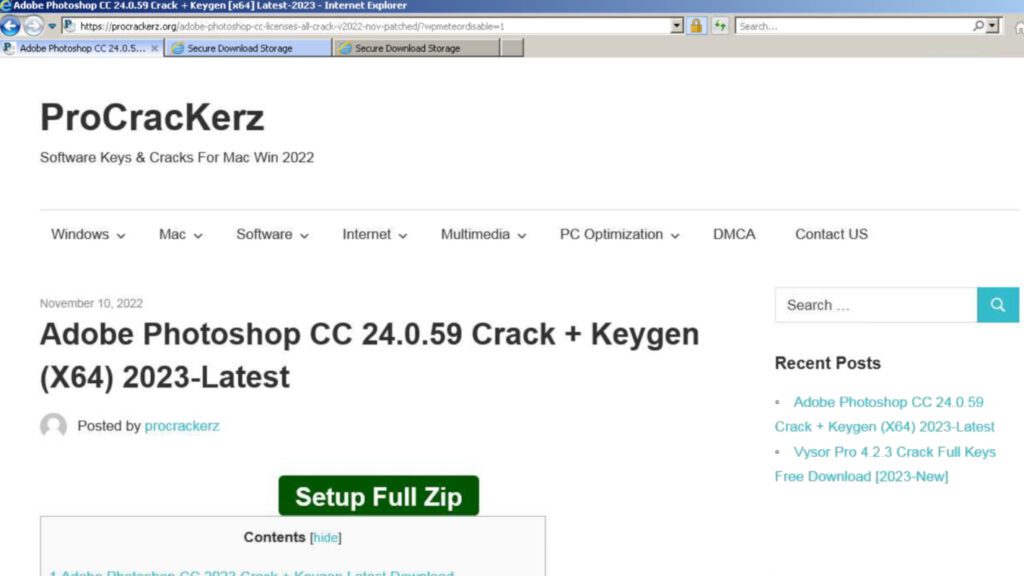
The password is added in order to deceive AV detection systems. Once the victim launches the setup.exe file inside the archive, a whole set of malware launched. Malware samples detected in these fake crack sites typically contain STOP/DJVU ransomware variants, Vidar, Azorult and RedLine Stealers.
Users who want to prevent this malware from compromising their computer should keep it protected with a robust AV solution offering real-time protection. In addition, one should never look up software cracks online or seek any other copyright-protected material illegally.
Furthermore, people should carefully inspect advertisements online, especially those that promise something for free. Most of the time, if something seems too good to be true, it most likely is. For example, it is highly unlikely that premium software vendors like Adobe, AutoDesk or Tenorshare would start giving away their software for free, when usually a license or subscription is required to access full versions of these programs.
Remove RedLine Stealer malware and protect your privacy
If you have spotted the described threat on your computer, do not hesitate and take action to remove RedLine Stealer malware for good. It is important to start your PC in Safe Mode with Networking before you begin, as it helps to shut down malware’s processes that may try to interfere with your AV and prevent the removal. You can use antivirus of your choice, although we highly recommend INTEGO Antivirus for this task.
Once you complete RedLine Trojan removal, consider downloading RESTORO to repair damaged Windows OS files. If you’re considering to reinstall Windows following a malware attack, this tool strikes out the need to do so as it replaces damaged components with healthy files.
In order to protect your privacy, we strongly recommend changing your passwords for whichever accounts you have saved your passwords for in web browsers, also those of FTP, IM clients and VPNs. Additionally, inform your bank about the attack as the malware could have stolen your credit card details.
OUR GEEKS RECOMMEND
Our team recommends removing malware using a professional antivirus software.
REMOVE THREATS WITH ROBUST ANTIVIRUS

Get INTEGO ANTIVIRUS for Windows to remove ransomware, Trojans, adware and other spyware and malware variants and protect your PC and network drives 24/7. This VB100-certified security software uses state-of-art technology to provide protection against ransomware, Zero-Day attacks and advanced threats, Intego Web Shield blocks dangerous websites, phishing attacks, malicious downloads and installation of potentially unwanted programs.
Use INTEGO Antivirus to remove detected threats from your computer.
GeeksAdvice.com editors select recommended products based on their effectiveness. We may earn a commission from affiliate links, at no additional cost to you. Learn more.
RedLine Stealer malware Removal Guidelines
Method 1. Enter Safe Mode with Networking
Step 1. Start Windows in Safe Mode with Networking
Before you try to remove the virus, you must start your computer in Safe Mode with Networking. Below, we provide the easiest ways to boot PC in Safe Mode with Networking, but you can find additional ones in this in-depth tutorial on our website – How to Start Windows in Safe Mode. Also, see a video tutorial on how to start Windows in Safe Mode:
Instructions for Windows XP/Vista/7 users
- First of all, turn off your PC. Then press the Power button to start it again and instantly start pressing F8 button on your keyboard repeatedly in 1-second intervals. This launches the Advanced Boot Options menu.
- Use arrow keys on the keyboard to navigate down to Safe Mode with Networking option and press Enter.
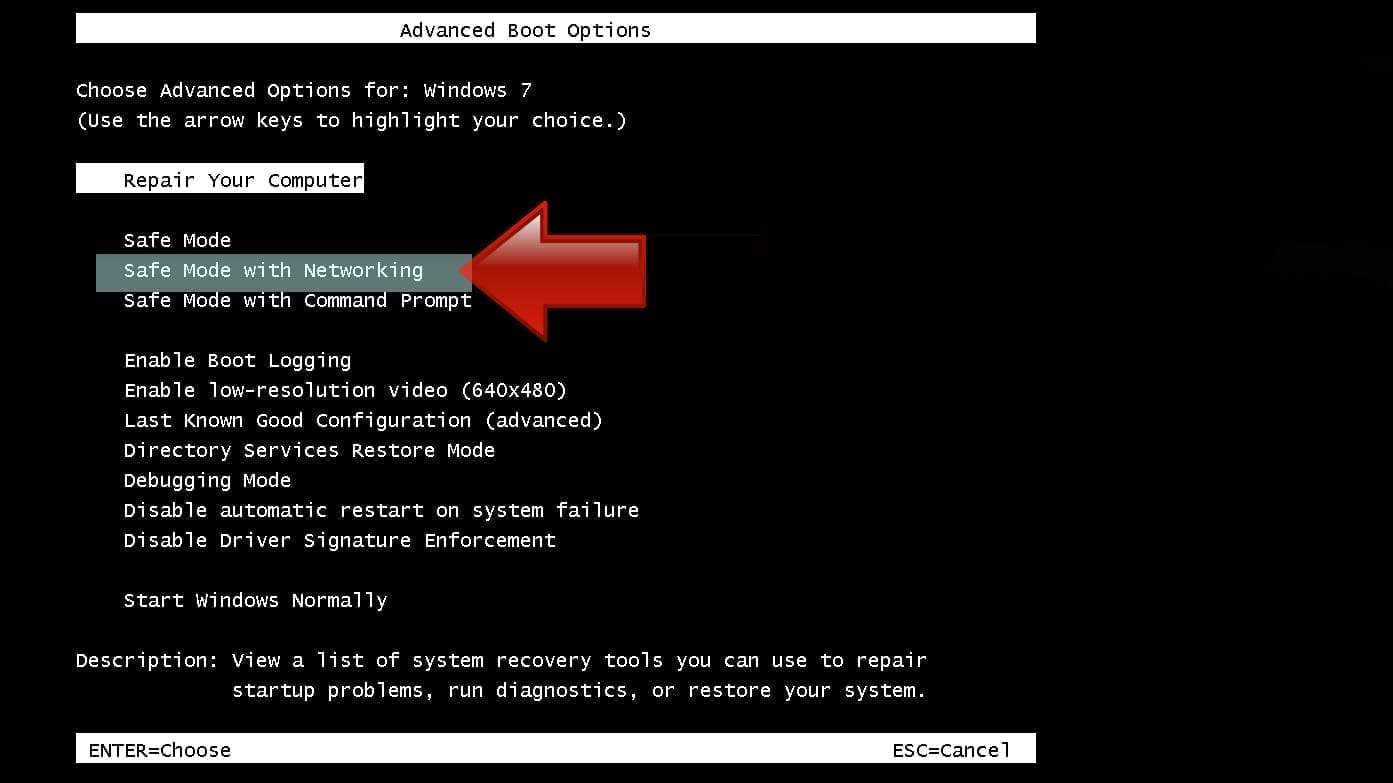
Instructions for Windows 8/8.1/10 users
- Open Windows Start menu, then press down the Power button. On your keyboard, press down and hold the Shift key, and then select Restart option.
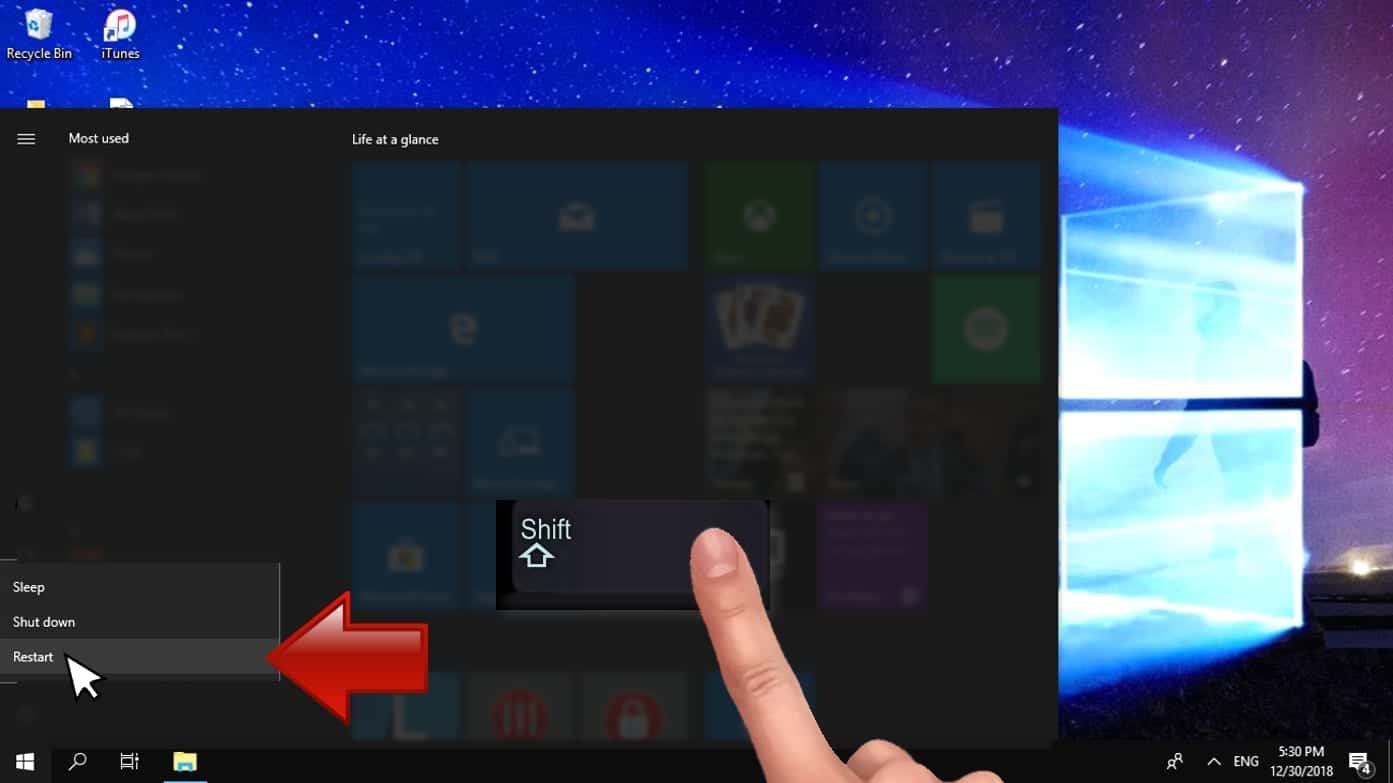
- This will take you to Windows Troubleshoot screen. Choose Troubleshoot > Advanced Options > Startup Settings > Restart. Tip: If you can't find Startup Settings, click See more recovery options.
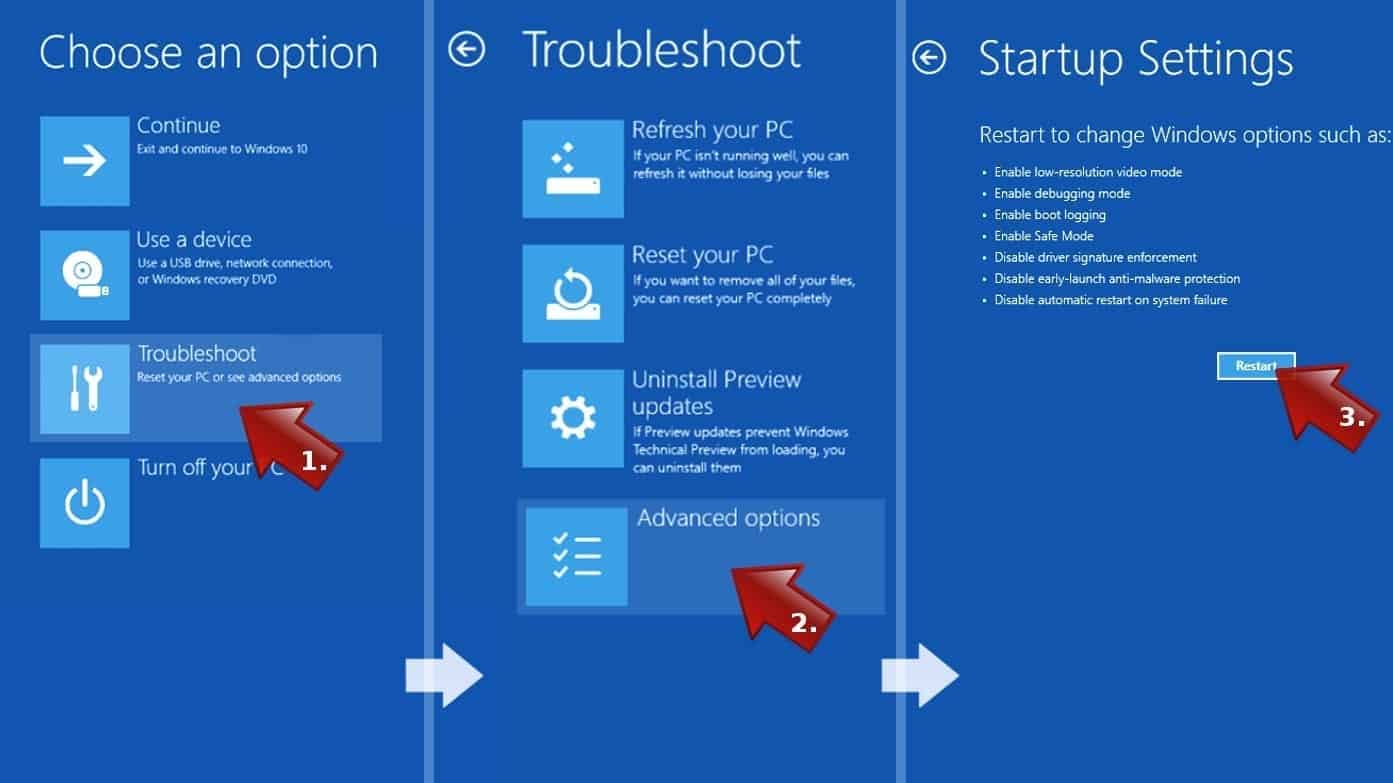
- In Startup Settings, press the right key between F1-F9 to enter Safe Mode with Networking. In this case, it is the F5 key.

Step 2. Remove files associated with the virus
Now, you can search for and remove RedLine Stealer malware files. It is very hard to identify files and registry keys that belong to the virus, Besides, malware creators tend to rename and change them repeatedly. Therefore, the easiest way to uninstall such type of a computer virus is to use a reliable malware removal program. We recommend using SYSTEM MECHANIC ULTIMATE DEFENSE , which can also restore deleted files. Additionally. we recommend repairing virus damage using RESTORO.
Special Offer
Compatibility: Microsoft Windows
See Full Review
RESTORO is a unique PC Repair Tool which comes with an in-built Avira scan engine to detect and remove spyware/malware threats and uses a patented technology to repair virus damage. The software can repair damaged, missing or malfunctioning Windows OS files, corrupted DLLs, and more. The free version offers a scan that detects issues. To fix them, license key for the full software version must be purchased.
Method 2. Use System Restore
In order to use System Restore, you must have a system restore point, created either manually or automatically.
Step 1. Boot Windows in Safe Mode with Command Prompt
Instructions for Windows XP/Vista/7 users
- Shut down your PC. Start it again by pressing the Power button and instantly start pressing F8 button on your keyboard repeatedly in 1-second intervals. You will see Advanced Boot Options menu.
- Using arrow keys on the keyboard, navigate down to Safe Mode with Command Prompt option and press Enter.
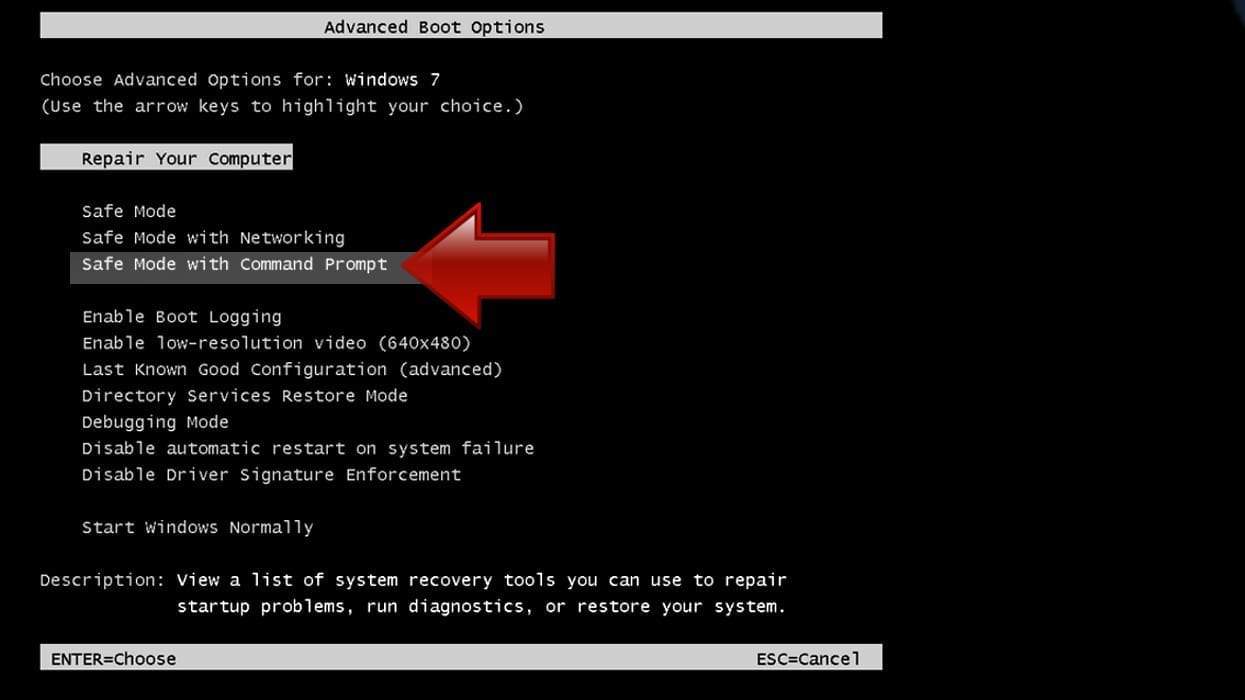
Instructions for Windows 8/8.1/10 users
- Launch Windows Start menu, then click the Power button. On your keyboard, press down and hold the Shift key, and then choose Restart option with the mouse cursor.

- This will take you to Windows Troubleshoot screen. Choose Troubleshoot > Advanced Options > Startup Settings > Restart. Tip: If you can't find Startup Settings, click See more recovery options.

- In Startup Settings, press the right key between F1-F9 to enter Safe Mode with Command Prompt. In this case, press F6 key.

Step 2. Start System Restore process
- Wait until system loads and command prompt shows up.
- Type cd restore and press Enter, then type rstrui.exe and press Enter. Or you can just type %systemroot%system32restorerstrui.exe in command prompt and hit Enter.

- This launches System Restore window. Click Next and then choose a System Restore point created in the past. Choose one that was created before the malware infiltration.

- Click Yes to begin the system restoration process.
After restoring the system, we recommend scanning the system with antivirus or anti-malware software. In most cases, there won't be any malware remains, but it never hurts to double-check.
Disclaimer. This site includes affiliate links. We may earn a small commission by recommending certain products, at no additional cost for you. We only choose quality software and services to recommend.

Norbert Webb is the head of Geek’s Advice team. He is the chief editor of the website who controls the quality of content published. The man also loves reading cybersecurity news, testing new software and sharing his insights on them. Norbert says that following his passion for information technology was one of the best decisions he has ever made. “I don’t feel like working while I’m doing something I love.” However, the geek has other interests, such as snowboarding and traveling.
Leave a Reply